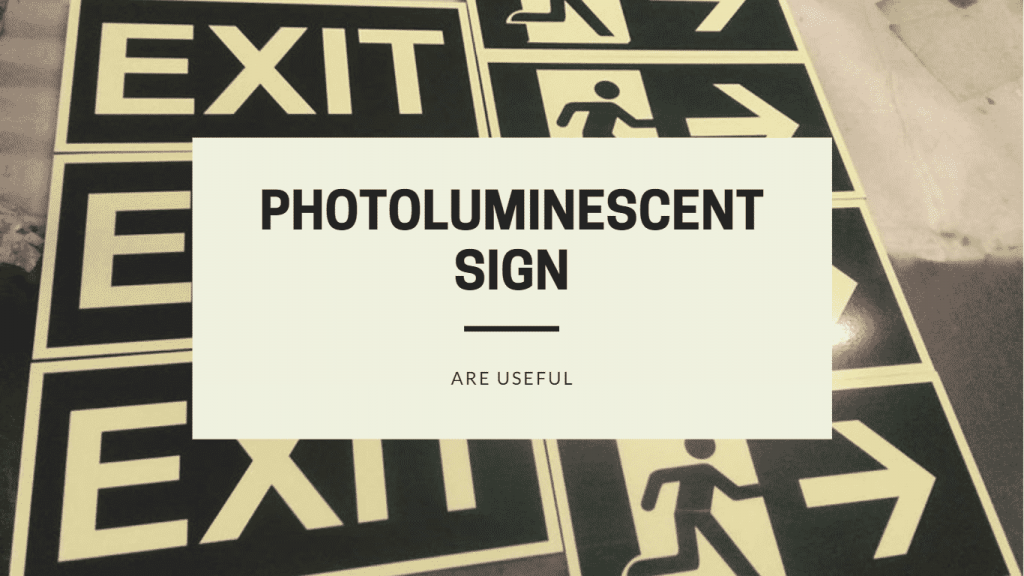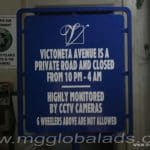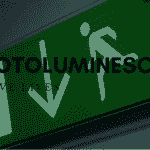
For years Lights Council Australia (LCA) has rebelled against photoluminescent sign are (PL) ‘radiance in the dark’ exit signs, stating it inferior to illuminated signs. Meantime, advocates of PL exit signs insist their products are effective, totally code-conformant as well as worthy of respect. John Power examines this battle for exit signs preeminence.
Lighting Council Australia (LCA) has a long-standing animosity in the direction of photoluminescent (PL) leave signs, which relies upon ‘glow in the dark’ products to offer noticeable fire escape signage in the constructed setting.
Normally, PL photoluminescent sign are charged by ambient light (daylight and/or man-made light with a CCT of 4,000 K or greater) and are developed to offer a reputable (i.e. non-powered) method finding in case of a power interruption.
PL signs in well-lit environments can work without any power links in all; and in improperly lit places like emergency situation getaway stairwells, ‘crossbreed’ PL photoluminescent sign are include their very own powered light to keep signs billed, achieve the very same ends.
The main advantages of PL signage, according to advocates, are:
PL signs function dependably in a power outage, whereas standard brightened (powered) signages, which count on batteries to trigger if power is detached, are worthless if batteries fail.
PL photoluminescent sign are require very little upkeep, whereas brightened exit indications call for routine monitoring of electronics as well as battery feature.
Sustainability: PL photoluminescent sign are made to last for decades with very little intervention as well as making use of no or minimal power, whereas illuminated signages have smaller life expectancies, in addition to higher environmental effects with battery as well as lamp substitute as well as disposal, and so on
. As far back as 2014, LCA has actually alleged that PL departure signs has just a fraction of the luminosity of conventionally powered signs, and deals with various technical shortages to work effectively as well as successfully in real-world circumstances.1.
In its newest strike against photoluminescent sign are departure signs, LCA made a public entry to the Victorian Division of Atmosphere, Land, Water & Planning (DELWP) in mid-2018, adhering to the department’s ask for entries in connection with a revamp of its Victorian Energy Upgrades (VEU) scheme, previously known as the Victorian Energy Efficiency Target (VEET) system. This system is a power certificates-based program designed to motivate the installation of an approved checklist of energy-efficient items.
In its entry, LCA called for all PL leave signage to be excluded from the system. It was a strong ‘preemptive strike’, considered that photoluminescent sign are products had never ever been included in the plan to begin with. Indeed, the whole PL item class had never been thought about in the context of the scheme before this most current review process.
LCA’s submission was among 3 submissions2 gotten by the department relating to PL exit signs. Apart from LCA’s submission, 2 entities– Energy Efficiency Council (EEC) and Genesis Now– made entries supporting the consolidation of PL signage right into the scheme.
Adhering to consideration of all three submissions at the end of 2018, the division determined to exclude PL departure signage from the VEU scheme, as clarified to Electric Connection by a federal government representative.
” Yes, the replacement of existing leave signages with photoluminescent exit safety signages was left out from the VEU program as part of the 2018 law review process,” the spokesman stated.
” The reasons for this exclusion were consisted of in the file entitled Victorian Energy Upgrades– Reaction to Assessment.3.
” The public reasons provided can be discovered on page 17 of this paper, as well as include:.
‘ The division does not sustain the incorporation of photoluminescent indications as an eligible upgrade product, due to the fact that this product can not be specified as a stand-alone inside illuminated light source, would certainly not fulfill the extent of Component 34, and also requires charging from an external light source.'”.
Asked if the division called any other PL-related companies or peak firms before making its decision, the spokesperson said the division made no such queries:.
” This choice was gotten to complying with interior conversation, plan evaluation, study and also recommendations of subject matter professionals.”.
Simply put, considered that the LCA’s entry was the only voice calling for the exclusion of PL signs from the plan, and in light of the truth that no specialist PL-related parties were consulted, it seems clear that the division’s choice was based specifically on the LCA’s entry.
Exemption from the system is certainly a body strike to the PL leave signs industry, not just because of its potential impact on sales, yet also because of the preconception and also confusion it casts on the PL sector in its entirety.
Asked why LCA made its entry, LCA chief executive Richard Mulcahy said, “Our setting has actually not transformed since the Australian Building Codes Board (ABCB) Office proposed changes to allow PL exit signs (ES) under deemed-to-satisfy provisions in 2014. Our argument is that they are basically risky, particularly in evacuations in the presence of smoke. The signs are required to only be 1/260th as intense as traditionally brightened exit indications, which is simply not nearly enough light for secure egress. Building codes worldwide recognize the comprehensive empirical information on the subject and also appropriately, do not enable PL ES as a substitute for illuminated departure signs.”.
Richard described the LCA submission as “proactive”, motivated as an action to verbal comments made by a private on behalf of PL departure signage at a DELWP occasion last year.
” The recent addition of the topic in our VEU system entry to DELWP was positive,” he claimed.
” At a stakeholder discussion forum occasion, one gentleman vocalised his point of view to DELWP personnel that PL ES upgrades ought to be a qualified task under the scheme and need to generate the certificates based on the power cost savings of totally removing a luminaire. Largely, this would incentivise non-compliance.”.
Scathingly, Richard included: “the VEU plan has actually had a history of substandard drivers and also seems to be tracking in a favorable instructions from a compliance stand-point.
” Introduction of an activity that would enable cowboys to make buildings unsafe is the last point it requires.”.
Ouch! Ten rates … choose your own light sabers!
PL strikes back.
Photoluminescent signs Philippines Lighting Council (PLC) admits it was caught snoozing during the abovementioned submissions procedures, and also only became aware that PL ES had actually been resolved during the VEU plan upgrade after reading a subsequent LCA announcement.
Nonetheless, PLC points out that PL ES are allowed in jurisdictions all over the world, consisting of Australia and also NZ, and take pleasure in equal condition with electric check in both Canada and also the United States. As a matter of fact, building codes in several of the world’s most tightly managed areas, consisting of New York City, in fact mandate the use of PL ES in conjunction with electric signage (as a precaution versus failure of back-up batteries in powered indications).
PLC chairman and executive chairman of Ecoglo Australia, Trevor Dimond, states LCA arguments to PL ES are dubious clinically and also represent nothing greater than the demonstrations of one sector group versus one more.
” They are a sector lobby group, just the way we are,” Trevor muses, adding that PL emergency situation ES has as much to do with ‘presence’ as ‘illumination’.
Current modifications to the wording of the building ordinance in both Australia and also NZ, he keeps in mind, enhance this distinction: “If you take a look at both the Australian as well as NZ Building Codes, both used to have actually areas called Emergency Lights, and both changed them to Emergency Visibility or Exposure in an Emergency (specifically) especially to acknowledge that this is not all practically illumination.”.
According to Trevor, the only current Australasian Conventional pertaining to ES is AS/NZS 2293.1:2018, which was prepared by the Joint Technical Committee LG-007 and also released in June 2018. Adherence to this Conventional with standard electrical ES is one way of upholding the emergency signage demands of section E4.8 of the National Construction Code (NCC). One more implies of complying with NCC provisions is using deemed-to-satisfy, or performance-based requirements. Presently, credible PL ES products are able to achieve deemed-to-satisfy conformity with all relevant NCC stipulations.
Trick NCC arrangements, Trevor states, are as follows: “Requirements E 4.8 establishes a minimal luminance degree for visibility, which is 30 millicandela per metre settled (mcd/m2). It also says it requires 100 lux on the face of the indicator, and there is a minimal duration period of operation, which states that the minimum luminance level requires to persist for at the very least 90 minutes.”.
Not web content with being required to count on deemed-to-satisfy arrangements, nonetheless, PLC is working with Specifications Australia to develop its own timetable of Australian Requirements connecting to PL ES.
As soon as finished, PL ES will no more have to be evaluated versus standards created for illuminated signage, Trevor states enthusiastically. As well as, with any luck, celebrations associated with the drafting of the new standards will certainly be totally certified to resolve PL technical aspects.
This undertaking, which started last year, is well progressed.
” In the last telephone call I had prior to Xmas, we discovered that the overarching compliance committee for Specification Australia had actually authorized our proposition for work, so it’s looked at the initial hurdle,” Trevor says.
Technical arguments.
As pointed out above, LCA has raised 2 main premises for objection to PL ES: (1) inadequate luminance of as low as 30mcd/m2, compared with typical illuminated ES luminosity of 8– 15cd/m2 (hence the LCA’s recommendation to ‘1/260th as bright as generally lit up exit safety signages’); and the need for a powered emergency situation light within 2m of a leave door– a dual-purpose lit up leave sign itself can satisfy this spec, whereas a PL indication would need a different (powered) light to be mounted alongside it, properly ruin any type of power cost savings derived from the PL indicator.
Ecoglo technical supervisor Mark Watson BE, CMEngNZ, CPEng, IntPE( NZ), RPEQ (Fire, Mechanical) repeats that luminosity as well as visibility are different scientific researches.
” So, just how brilliant something requires to be in order to show up relies on comparison with the background,” he urges.
” A PL ES sitting on a wall in a normal office will certainly have more than, say, 20cd/m2 luminosity (revealed to a minimum 100 lux) due to the fact that it’s a comparison indicator and that’s just how much light is jumping off it. When it goes dark, it … still maintains exposure since the history is that much darker as well as your eye notices the contrast. So stating a certain luminance is required for exposure is perplexing because it’s in fact luminance comparison that offers exposure.”.
As for the demand for emergency lights to be placed within 2m of an exit door, both Trevor as well as Mark keep in mind that this is no more a requirement in NZ; Australia is the only territory worldwide that continues to have this need, as there appears to be little clinical validation for its incorporation.
According to Mark, much of the world’s building codes base their emergency situation ES stipulations on a global common created by US-based organisation Underwriters Laboratories (UL), which is a century-old safety consulting as well as certification company with 10,000 team as well as depiction in lots of countries.
Conventional ‘UL 924’ is UL’s worldwide requirement for the exposure of ES, and also is code-mandated in nations like the US and Canada.
Electrical Link asked UL’s principal designer– lights, Michael Shulman from California, to comment on both the candela-based luminosity levels specified in Australian Standards, as well as the suitability of ‘presence’ screening versus minimum candela levels. (See ‘It’s All About Visibility’ on p. XX.).
Michael’s assessment, as detailed in his responses, is that minimal candela-based benchmarks (over 8.6 cd/m2) are based upon “historic practice instead of a science-based resolution of necessity”. Meanwhile, he keeps in mind that minimal luminance measurements, which were just ever designed to apply to 100ft seeing ranges, are useless if they do not additionally resolve visibility-based requirements of “contrast, uniformity and also physical dimensions”.
Retribution of PL signages.
PL ES are now appearing in greater numbers throughout the world. In Australia, organisations like Bunnings, VISY and Huntsman Polyurethanes have actually embraced PL ES, according to the Genesis Currently entry to the VEU plan, as well as the uptake has actually been keen in healthcare facility, industrial and education and learning centers in both Australia and also NZ. A large number of station house have actually likewise set up PL signage and also various other emergency situation presence items in NZ, according to Trevor as well as Mark.
Source: https://electricalconnection.com.au/photoluminescent-pl-exit-signage-where-are-we-at/






